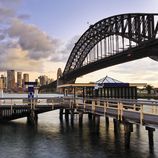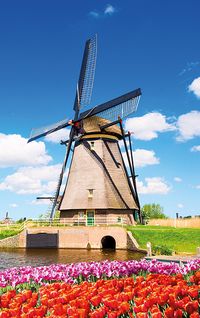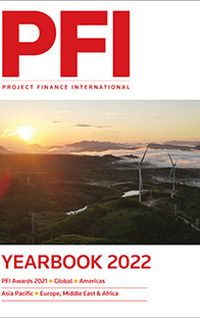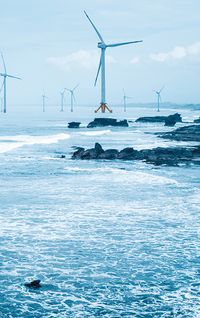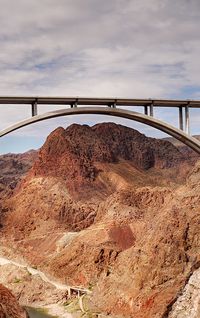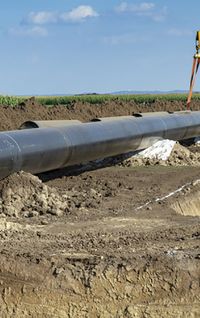Three key themes have emerged in infrastructure – the three Ds: Digitalisation, Decarbonisation and Diversity. By Ali Miraj, director in infrastructure finance at ING Wholesale Banking, London.
Infrastructure is the new centrepiece of high politics. Against a backdrop of rising geopolitical tensions in the South China Sea, a power vacuum in Afghanistan at the heart of Central Asia, and rising energy costs and supply pressures, infrastructure is being used as a strategic tool of foreign policy as China continues to deploy billions on its Belt & Road initiative. Russia, for its part, is pressing for swift approval by the German regulator of its Nordstream 2 pipeline to keep gas flowing across the Baltic to Europe, which has brought concerns over security of energy supply in the EU into sharp focus.
The UK has experienced particular issues with a lack of gas storage capacity, paltry wind to power offshore turbines, and the expansion of nuclear facilities to provide baseload capacity back as part of the conversation around the optimal energy mix. In the US, President Biden has finally succeeded in cajoling Congress to support a US$1.2trn infrastructure bill that will see billions spent on roads, bridges, broadband, the rail network and airports. That is a step in the right direction but well short of the “New Deal” transformation secured by Franklin D. Roosevelt in the 1930s, which many Democrats were hoping for.
Fundraising
Meanwhile, the voracious appetite for the infrastructure asset class has continued unabated, with close to US$60bn raised in 1H 2021. Given the logistical challenges posed by Covid-19, a lot of this money has come from Limited Partner (LP) investors placing funds with General Partners (GPs) that they have previously worked with. Big is certainly beautiful, as evidenced by the continued growth of mega-funds – with EQT, KKR and I Squared all carrying on raising funds targeting commitments in the US$12bn to US$17bn range. There is also talk of Brookfield potentially looking to raise up to US$25bn for its fifth flagship global infrastructure fund next year.
The flow of such vast sums of capital towards the big beasts of the infrastructure market has provided opportunity to those operating in the mid-market, with the average fund size close to US$1.5bn, up from a level of less than half that size five years ago. Managers have also been in a hurry to put money to work, with the average time between fund closing and deployment now just four months.
This wall of capital has had two consequences. First, valuations of assets in certain sectors regarded as hot such as fibre are now being seen by some as frothy. A number of infrastructure equity investors are scratching their heads about multiples of 25x–30x Ebitda being paid for particular businesses, where the Ebitda number is itself punchy, often baking in future revenues that are yet to be realised.
The second development has been the continued expansion of the asset class. The widening definition of infrastructure has come to encompass modular building providers, life science parks, cold storage logistics outfits and pallet providers to transport air freight. That a number of these businesses were formerly owned by traditional leveraged buyout-driven private equity players underlines how the tectonic plates are shifting
The 3Ds
Three key themes have also emerged – the three Ds: Digitalisation, Decarbonisation and Diversity. While the first two were already in train before the pandemic, the acceleration of them since has been exponential.
* Digitalisation - In the case of digitalisation, one can understand why. We have all spent months working from home only able to do so via total reliance on our broadband connections. If there was hitherto any doubt about fibre being the fourth utility, there is none now. Communications, smart cities and the internet of things will all rely on our ability to rapidly deploy fibre at scale to drive the recovery.
Digital infrastructure is rightly seen as a key enabler of growth, with the European Commission estimating that approximately €65bn–€100bn of investment will be required per year to get the majority of EU citizens linked to fibre broadband by 2025. With traditional telecoms providers facing capital constraints, this provides continued opportunities for infrastructure investors.
In the datacentre space, the focus has been on DFLAP – the key hubs of Dublin, Frankfurt, London, Amsterdam and Paris. Here the demand from hyperscalers such as Microsoft, Amazon and Google for new datacentres is unabated given the immense need for capacity driven by the demands of cloud computing. But there are also new opportunities driven by the need for smaller scale datacentres at the “edge” which are located closer to end users and hence minimise the risk of latency (or buffering) when you are binge-watching Bridgerton on Netflix.
* Decarbonisation – But it is not just what we economically produce and having the right tools to achieve it that matters, but also the manner in which we do so. Larry Fink of Blackrock, in his 2019 epistolary offering to the CEOs of the companies that his firm invests in, emphasised the link between profit and purpose. The former Governor of the Bank of England, Mark Carney, in his 2020 BBC Reith Lectures “How we get what we value” and in his book on the subject, has emphasised the distinction between value in a purely monetary sense and values: moral, social and environmental, that need to act as guardrails in the pursuit of profit.
An impatient world now implores governments and the private sector to come together with the support of civil society to make commitments and stick to them. That is because the effects of climate change are hitting us here and now and they are stark. The excessive rainfall that has been experienced this summer in parts of Germany, Luxembourg, Belgium and the Netherlands has cost over 200 lives, parts of California have burned, causing havoc, and wildfires in Greece have seen more than 100,000 hectares of forest razed to the ground.
This has forced infrastructure investors to pay attention to climate change adaptation and the resilience of their assets. New regulatory requirements from the Task Force on Climate-Related Financial Disclosures (TCFD), which requires disclosure to underlying investors on climate-related risks, has also led to a number of fund managers stress-testing portfolios for adverse weather events out to 2050.
The growing focus on renewable energy sources, which are by their nature intermittent, has created a need for electricity storage and led infrastructure funds to invest in lithium-ion batteries. It has also generated interest in compressed air energy storage (CAES), where electricity is used to squeeze air into underground caverns, which can then be released to generate power when required. Infracapital’s partnership with Corre Energy to construct such a storage facility in a salt cavern in Zuidwending in the Netherlands, is a case in point.
Hydrogen is also in vogue. However, astute investors are discerning and distinguish between “grey” hydrogen, where gas is used as the feedstock, which generates carbon, “blue”, where the carbon is captured, and “green”, where hydrogen is generated from water through electrolysis. It is also notable that investors are considering investments in gas-related assets such as LNG facilities and distribution networks more carefully, with a particular focus on stranded asset risk. Considerations around local regulatory dynamics in different countries, the potential for repurposing infrastructure to distribute hydrogen and the lack of a settled view on when peak gas will come to pass are all in play.
* Diversity – Something else has also changed in the past 18 months. On May 25 2020 a black man gasped for breath on a street corner in Minneapolis as a police officer pressed his knee on his windpipe. The three words uttered by that man, George Floyd, sent shockwaves across the world. “I can’t breathe”. It triggered arguably the most seminal moment in the fight for civil rights since Martin Luther King Jr told us that he had a dream, on the steps of the Lincoln Memorial in 1963.
Our industry is itself changing. Diversity in its broadest sense is on the agenda to ensure that the best talent is identified and nurtured, with LPs paying increasing attention to the diversity of the fund managers they put their money with. Sheffield Haworth, a talent advisory firm, found that in Q2 2021 31% of hires at VP level and above were “gender diverse”, up from 18% the year before.
Funds such as Vauban, founded by Gwenola Chambon, are leading the way here with gender parity currently at 40%. Those fund managers are in turn focusing on diversity within the portfolio companies they invest in. In some cases, KPIs on gender diversity are being included as part of sustainability-linked loan financings where progress is tracked annually. Challenges remain, with far fewer women than men applying for roles across the industry from entry level all the way to board positions, and it will require a collective effort to achieve the shift being sought.
Conclusion
As we look towards the future, the pandemic provides an opportunity for the infrastructure industry to come together to collectively “build back better”. That will not be realised through the infrastructure assets that we construct and invest in alone but also the manner in which we do so, with particular attention on the vital areas of sustainability and diversity.
To see the digital version of this report, please click here
To purchase printed copies or a PDF of this report, please email gloria.balbastro@lseg.com

